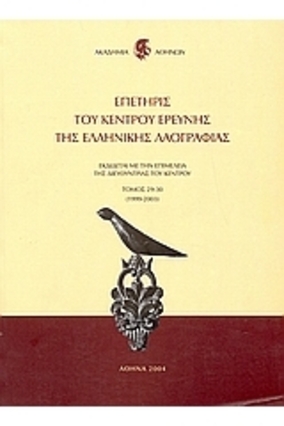Διατροφικές συνήθειες τών κατοίκων τής Σαντορίνης
Part of : Επετηρίς του Κέντρου Ερεύνης της Ελληνικής Λαογραφίας ; Vol.28, 1986, pages 159-170
Issue:
Pages:
159-170
Parallel Title:
The nutrional habits of the inhabitants of the island of Santorini
Author:
Abstract:
The volcanic composition of Santorini soil and the prevalent climate conditions define the quantitative and qualitative peculiarities observed in the cultivation of various products and in a wider sense they characterize the nutritional habits of the inhabitamts. The wine-producing vine (vitis vinifera) and the tomato and barley rowing were the main agricultural products. There are also various kinds of legume cultivated (e.g. the Santorini split pea). Cattle raising other than for primary domestic purposes had never been a staple in Santorini. Meat consumption was rare and restricted on Sundays and special occasions. The inhabitants' nutrition also contained legume and because of its scarcity, fish and mostly cod was consumed only in its salted form. Some kinds of greenballs constituted a common nutritional habit. Past either on its own or in combination with soup was the base of their nutrition. The only fruit used was of local production. Sweets were in the peasant households unless on special occasions, while it was a necessary staple for the well — off household, even if it has to be the simplest form possible, a turkish delight (loukoumi) for example. A characteristic element of their nutrition was their effort to utilize whatever they could produce, by consuming the following day any leftovers from the previous one. «Panigiris», a festal dish was necessary in religion celebration. Sick people were given chicken and cream as restorative food. In funerals, it was the custom for loukoumi and raki to be offered in the graveyard area
Subject:
Subject (LC):




